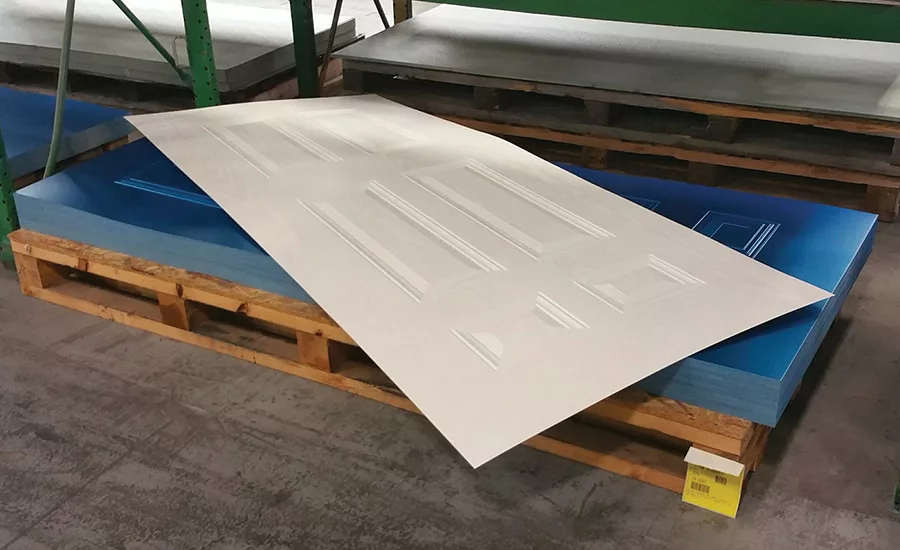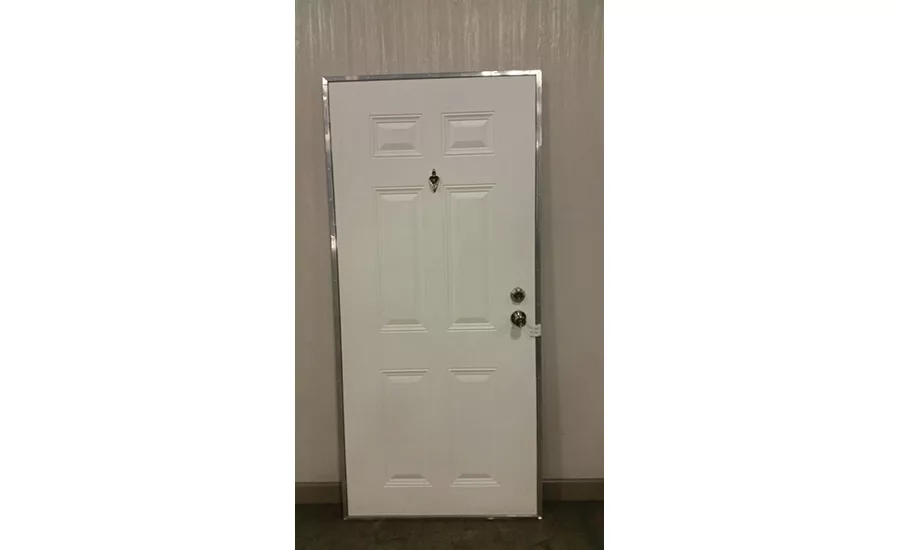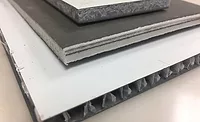Case Study
Creating a Better Bond with Laminated Coil
OEMs turn to custom formulators to solve complex adhesion problems with laminated coil and sheet metals.


For manufacturers that use flat-rolled steel, aluminum and other metals to fabricate parts or products, the ability to bond decorative foils and laminate films to the substrate provides an opportunity to deliver attractive finishes for a competitive edge. Decorative finishes include the look of stainless steel, brushed copper, and wood grains, as well as a variety of colors, imprints, and gloss grades. Laminate films can also serve a functional purpose by providing scratch or chemical resistance.
However, the process of laminating to metals is fraught with potential complications. If the wrong adhesive is used, if the curing process is not precisely controlled, or other variables are not managed, the result can be a high scrap rate or parts that fail in the field. When this occurs, OEMs and even the coil processors that supply them with bare or B-stage (pre-applied adhesive) coil turn to custom formulators for unique solutions to production issues. In many cases, the proper adhesive formulation can have significant benefits, such as speeding production, eliminating scrap, reducing the amount of material required, and even improving corrosion, UV, and antimicrobial resistance.
Applying Laminate
The use of laminated flat-rolled metal to fabricate parts or products is widespread throughout manufacturing. Some of the more common applications include appliances (refrigerators and freezers, washing machines, dishwashers, microwaves, range or fume hoods), construction products (insulated wall panels, garage doors, roofing products) and the mobile and manufactured home markets (walls, door panels).
The processing of adhering laminates to coiled rolls or sheets occurs in several different ways. Manufacturers can use in-house personnel to spray or brush adhesives within the plant. However, this process is slow, requires manual labor, and brings up safety and environmental concerns. Quality can also be an issue, and scrap rates are frequently quite high.
Automated equipment can also be used to apply foils and films to flat-rolled metals that come with pre-applied B-stage adhesive from a coil processor. This type of adhesive is designed to activate and cure within a specific temperature range. The laminate is then applied to the coil at the manufacturer’s plant using furnaces and nip rollers. Although automated processing is much faster and more efficient, it can also lead to quality control issues due to temperature variances within the curing ovens involved. In some cases, scrap rates can be as high as 20%.
“Application of adhesives in the final manufacturing facility can lead to significant amounts of scrap, higher per-piece labor costs, and can expose the manufacturer to significant environmental costs and scrutiny,” says Eric Fossen, managing director of Spencer Ridge Consulting, Ontario, Canada. “So they often are looking for a more efficient solution that gives them a more consistent [laminate] performance.”
Fossen says the simplest solution for OEMs is often to outsource the process completely. This eliminates the need for in-house labor, application equipment, curing ovens, and environmental control facilities. Adhesives applied in a coil coating operation offer the advantage of a high degree of consistency in both film thickness and cure conditions, which can provide a stronger and more durable adhesive bond. High-quality application allows the final product to be post-lamination formed into many severe bends and shapes without affecting the integrity of the bond between adhesive and film.
Adhesive Quality
Although coil processors control the application process much more tightly, the quality of the bond ultimately depends on the type of adhesive used. According to Fossen, many adhesive manufacturers offer a variety of off-the-shelf options, but will not customize a product to meet a customer’s unique requirements unless very large volumes are involved. When this occurs, coil processors and even OEMs turn to custom adhesive formulators with the expertise and experience in coil processing to come up with unique solutions to solve difficult problems.
“With large adhesive suppliers, if they have a product that works, great,” he says. “If not, they are often not willing to tweak the product to make it work for a specific application.”
Case Study: Door Panels
For Elixir Door Co., manufacturing entrance doors for manufactured homes involved vinyl-coated steel that was stamped and formed before being filled with urethane foam for insulation and structural strength. To accomplish this, Elixir Door ordered coil-rolled steel with pre-applied B-stage adhesive. The vinyl was then applied using curing ovens and nip rollers at the manufacturing plant. Approximately 2-3 years ago, however, the company began to experience significant adhesion problems, leading to a high scrap rate.
“The vinyl was coming off in major proportions—not just a ‘spot here’ or a ‘spot there,’ but in many places,” explains Archie Brown, general manager. “It was very inconsistent.”
Unable to identify the reason, Brown says he called in Universal Chemicals and Coatings (Unichem), a custom adhesives and coating formulator that specializes in coil processing and can create custom adhesives and coatings. The solution involved an adjustment to the temperature parameters of the curing oven, as well as a custom-formulated adhesive from Unichem designed to cure within a broader temperature range.
“Unichem analyzed our entire process and came up with some corrective actions,” Brown says. “We adjusted everything and have had no problems since.”
According to Brown, Elixir Door subsequently decided to outsource the entire process. Now the coil processor delivers a finished, vinyl-coated part using Unichem’s adhesive formulation that is already sized and stamped into shape. “We were paying [the coil processor] to apply adhesive, then paying to apply the vinyl in house,” he says. “Now they do it all in one operation at their facility. So our cost is much less, and we don’t have to worry about scrap because it’s on them, not us anymore.”
From Black to White
According to Fossen, even minor formulation changes can improve the end product. He cites the example of one customer that wanted to use the same adhesive, but change it from black to white so that it would not show through if the laminate film was scratched in the field. Unichem was able to create a white adhesive while expanding the curing temperature range as well. “Unichem is unique in being able to take a set of performance criteria and formulate an adhesive to meet the requirements,” Fossen says. ASI
For more information, visit online at www.unicheminc.com. Elixir Door Co. can be found at http://elixirdoorcompany.com.
Looking for a reprint of this article?
From high-res PDFs to custom plaques, order your copy today!



